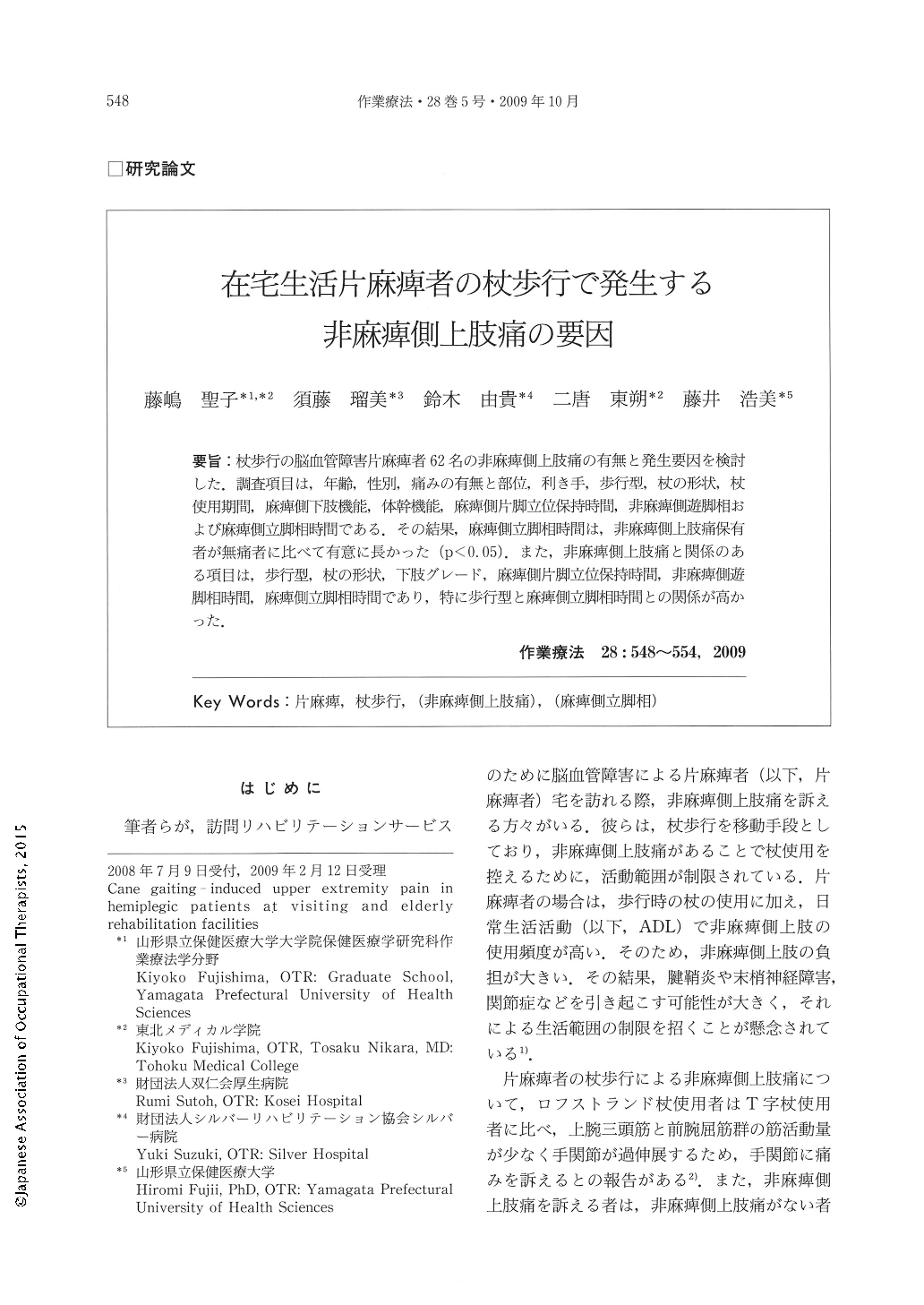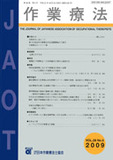Japanese
English
- 販売していません
- Abstract 文献概要
- 1ページ目 Look Inside
- 参考文献 Reference
要旨:杖歩行の脳血管障害片麻痺者62名の非麻痺側上肢痛の有無と発生要因を検討した.調査項目は,年齢,性別,痛みの有無と部位,利き手,歩行型,杖の形状,杖使用期間,麻痺側下肢機能,体幹機能,麻痺側片脚立位保持時間,非麻痺側遊脚相および麻痺側立脚相時間である.その結果,麻痺側立脚相時間は,非麻痺側上肢痛保有者が無痛者に比べて有意に長かった(p<0.05).また,非麻痺側上肢痛と関係のある項目は,歩行型,杖の形状,下肢グレード,麻痺側片脚立位保持時間,非麻痺側遊脚相時間,麻痺側立脚相時間であり,特に歩行型と麻痺側立脚相時間との関係が高かった.
62 hemiplegic patients at visiting and elderly rehabilitation facilities suffering from upper extremity pain caused by cane gaiting were investigated. The study included 11 domains: age, sexuality, gait type, cane model, level of lower extremity function, postural control function, region and pain or lack of it in the upper extremity, one-legged standing time of the paralyzed side, swing phase time of the nonparalysis side, and stance phase time of the paralyzed side. Results show that the stance phase time of the paralyzed side in patients suffering from painful upper extremity is significantly longer than that of the non-painful upper extremity (p<0.05). Gate type was found to be significantly related to the stance phase time of the paralyzed side, and level of lower extremity function (p<0.01). In addition, the cane model was found to be significantly related to the level of lower extremity function (p<0.01). Furthermore, one-legged standing time of the paralyzed side was found to be significantly related to the swing phase time of the non- paralyzed side (p<0.05). The occurrence of pain in the upper extremity by cane gaiting affected the stance phase time of the paralyzed side.

Copyright © 2009, Japanese Association of Occupational Therapists. All rights reserved.


